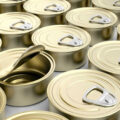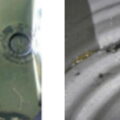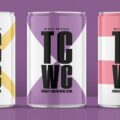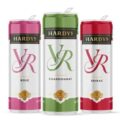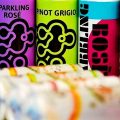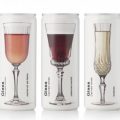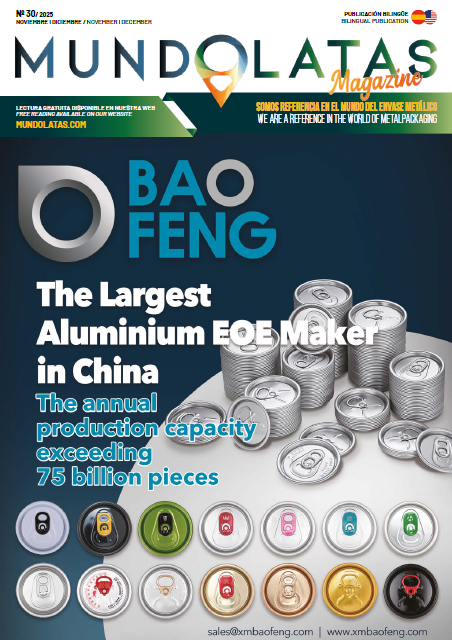Austin Montgomery, who is pursuing a PhD in Viticulture and Enology at Cornell’s College of Agriculture and Life Sciences, is focusing on researching the reasons behind unattractive aromas in wines that come canned.
During an educational experience abroad in countries such as Slovakia, Hungary and the Czech Republic, Austin Montgomery became passionate about viticulture and enology. Involved in tasting activities, dialogues and moments of conviviality with other wine lovers, he discovered his love for this industry.
According to the doctoral student in the Viticulture and Enology graduate program at Cornell’s College of Agriculture and Life Sciences, it was an incredible experience. His field of study focuses on the chemistry related to food and its flavor.
At the age of 19, during his trip abroad, he studied chemistry before entering the field of food science.
In order to focus on wine research, Montgomery decided to make random calls to different laboratories. So Gavin Lavi Sacks, who was associate chair and professor of food science at Cornell, invited him to join his team and work together on the development and application of new techniques for analyzing the components involved in the taste of wine and other alcoholic beverages.
The main objective of the project was to investigate the reasons behind the unpleasant odors present in canned wines. According to Montgomery, the increasing use of cans for craft beverages, such as beers and cocktails, is a clear example of the evolution in the packaging industry, motivated by their convenience and positive impact on the environment.
Although wine production in cans is gaining popularity, there are some producers who have reported problems with product stability and quality due to the development of hydrogen sulfide during storage. According to Montgomery, this chemical produces a very strong odor similar to rotten eggs that can ruin the product with just a small amount. The sensory threshold for detecting hydrogen sulfide in water is one part per billion, which shows how easy it is to adversely affect the product.
Prior to this study, little was known about how cans affect the chemical composition of wine.
Sulfur dioxide is an important element in wine preservation, as it prevents oxidation and the growth of microorganisms. In a low pH environment, most of the sulfur dioxide is in molecular form (SO2), while the remainder is in the form of bisulfite (HSO3-). This molecular form can move more easily through coating materials and react with aluminum, producing hydrogen sulfide. This by-product is known for its unpleasant aroma of rotten eggs, something no wine drinker wants to experience when opening a can of single-dose wine.
Montgomery, in his work, instructed manufacturers of any beverage containing sulfur dioxide to ensure that the pH level is above a specific point and that the amount of free sulfur dioxide is below a certain value to prevent the formation of hydrogen sulfide.
The objective of this study was to determine how the combination of wine ingredients and the material used in can linings affects hydrogen sulfide formation. Different types of coatings used on aluminum cans were analyzed, such as epoxy with bisphenol A, BPA-free epoxy and acrylic.
It seeks to provide better information to wine, cider and spirits producers on the appropriate levels of sulfur dioxide and the type of coating needed to prevent hydrogen sulfide degradation, damage or contamination of their products. This is important to ensure proper product quality and shelf life.
What is the reason behind possible unpleasant odors in certain canned wines and how can this problem be avoided?
Based on the facts and conclusions obtained, the project consisted of creating 10 types of wine with three commercial varieties each. These wines were stored in cans for eight months before sulfide levels were measured by the team.
Although it was believed that aluminum can coatings prevented contact between the wine or cider and the metal, studies have shown that chemical interactions may still occur. Neutral compounds can leach through coatings and react with aluminum, creating hydrogen sulfide and an unpleasant odor in the beverage.
According to Montgomery’s statements, aluminum cans are more environmentally friendly than glass bottles. This is because they are lighter and generate less carbon emissions. However, it was necessary to establish a SO2 limit so that producers could decide if they wanted to package their wines in cans without worrying about H2S production.
According to the findings, it is important to maintain a low level of sulfur dioxide (less than 0.4 mg/L) and to use epoxy coatings, either with or without BPA, to prevent the formation of hydrogen sulfide during storage of cans for up to eight months. In addition, it was confirmed that this same technique can be applied to other corrosive beverages.
Montgomery, an expert in the cider industry, said that in that field they have the opportunity to give presentations and comment on their findings. In addition, he mentioned his observation that cider appears to be less effective in masking the side effects of hydrogen sulfide compared to wine. For example, a Riesling with a strong aroma might be more likely to mask hydrogen sulfide than a cider with an 8% alcohol content.
The American Journal of Enology and Viticulture chose this article as the best in the field of enology in 2023. Montgomery is currently pursuing a USDA-funded project that aims to use natural food ingredients as anti-corrosion agents to extend the shelf life of beverage cans.
According to the interviewee, an extension document will be prepared within a maximum period of six months, which will be more comprehensible to winemakers. Working with the industry is satisfying as it allows us to generate a positive impact and collaborate with a team whose goal is to improve the quality of the wine, even if it is canned, which has become an increasingly popular option.


